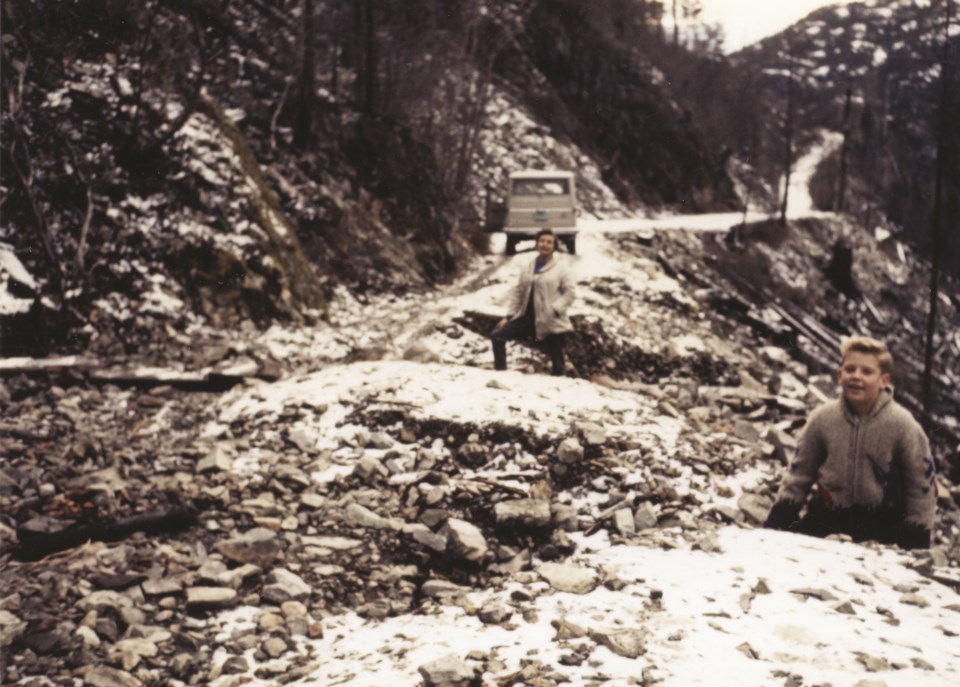The towering mountains and lush valleys that inspire people to fall in love with the Sea to Sky also create challenges for access. When Myrtle and Alex Philip arrived at John Millar’s cabin in 1911, they had taken a steamer to Squamish, and then walked the rest of the way to Millar’s cabin at present-day Function Junction. With the introduction of the railway to Alta Lake in 1914, the region was opened to more tourism and industry.
It was not until 1956, however, that a road connected Vancouver to Squamish, and there was not a reliable road to Whistler until the 1960s. To ensure the highway was completed in time for the opening of the lifts in 1965, rumor has it that the Garabaldi Lift Company gave a single ski to the then-Minister of Highways Phil Gaglardi. He kept this ski in his office as an incentive to complete the road, and was presented with the matching ski upon the completion of the highway.
Even once the highway went in, it was still a hair-raising journey. While driving the Sea to Sky in certain conditions today requires confident and experienced winter drivers, imagine if the roads were only plowed once a week. This is what visitors and residents had to contend with for the inaugural season of Whistler Mountain. Only ski fanatics would brave the journey, and you had to be a special type of enthusiast to make the trip on Friday evening before the roads were plowed on Saturday morning.
When you met another car along the single-lane plowed gravel road, there was no room to pass. Both cars were required to stop and snow was dug out of the snow bank to let the smaller car squeeze by. Revelers would spend Friday night at the Cheakamus Inn, watching to see whose cars had survived the rough trip. As Paul Burrows remembers, “Eventually most people ended up at the Inn because after driving that road you needed a drink.”
In 1966, one year after construction, Highway 99 was paved from Squamish to Mons and kept clear of snow as much as possible. As we know, that did not eliminate all transport problems. The Squamish Citizen reported in 1987, “Poor visibility, the near eradication of lines along the edge of the highway and the dinginess of the centre line coupled with the spottiness of the cat’s eyes (road reflectors) in many places makes it almost impossible to distinguish the centre line or edge of the road.” Does that sound familiar? The article goes on to recommend imbedding the cat’s eyes in the centre of the road, and suggesting that someone invent fluorescent paint for the road lines.
These solutions (including the invention of fluorescent paint), along with the widening of the road for the 2010 Olympics, have no doubt helped with access and we have seen incredible growth in visitors and residents alike, resulting in far more people using the Sea to Sky Highway. However, where you have mountainous geography and weather that brings amazing snowfalls, road and access continue to be topics of great debate. At least it does not take five hours to get to Costco every visit, unless you make the mistake of leaving on Sunday afternoon!




